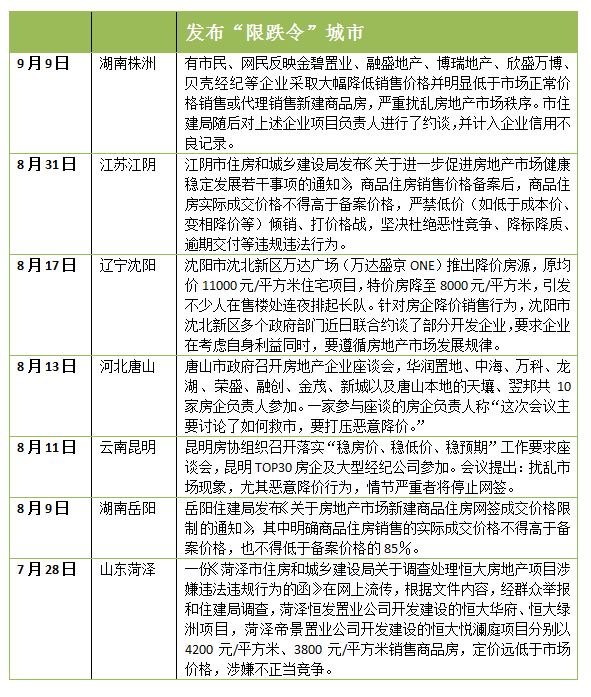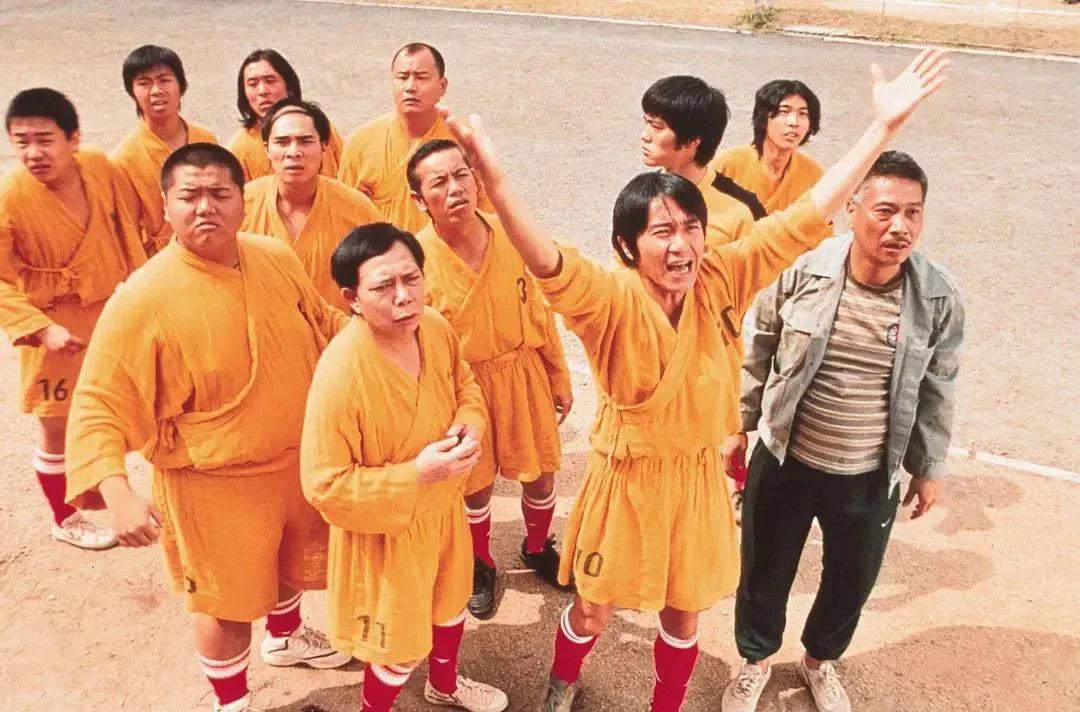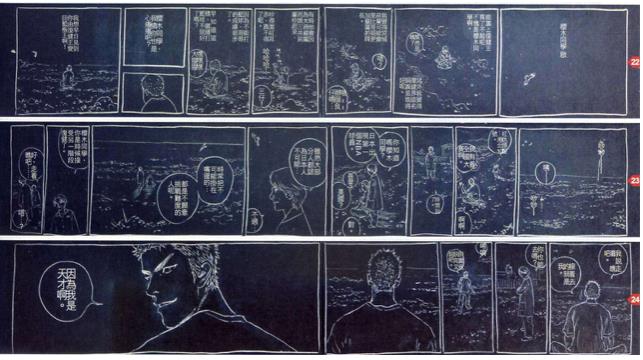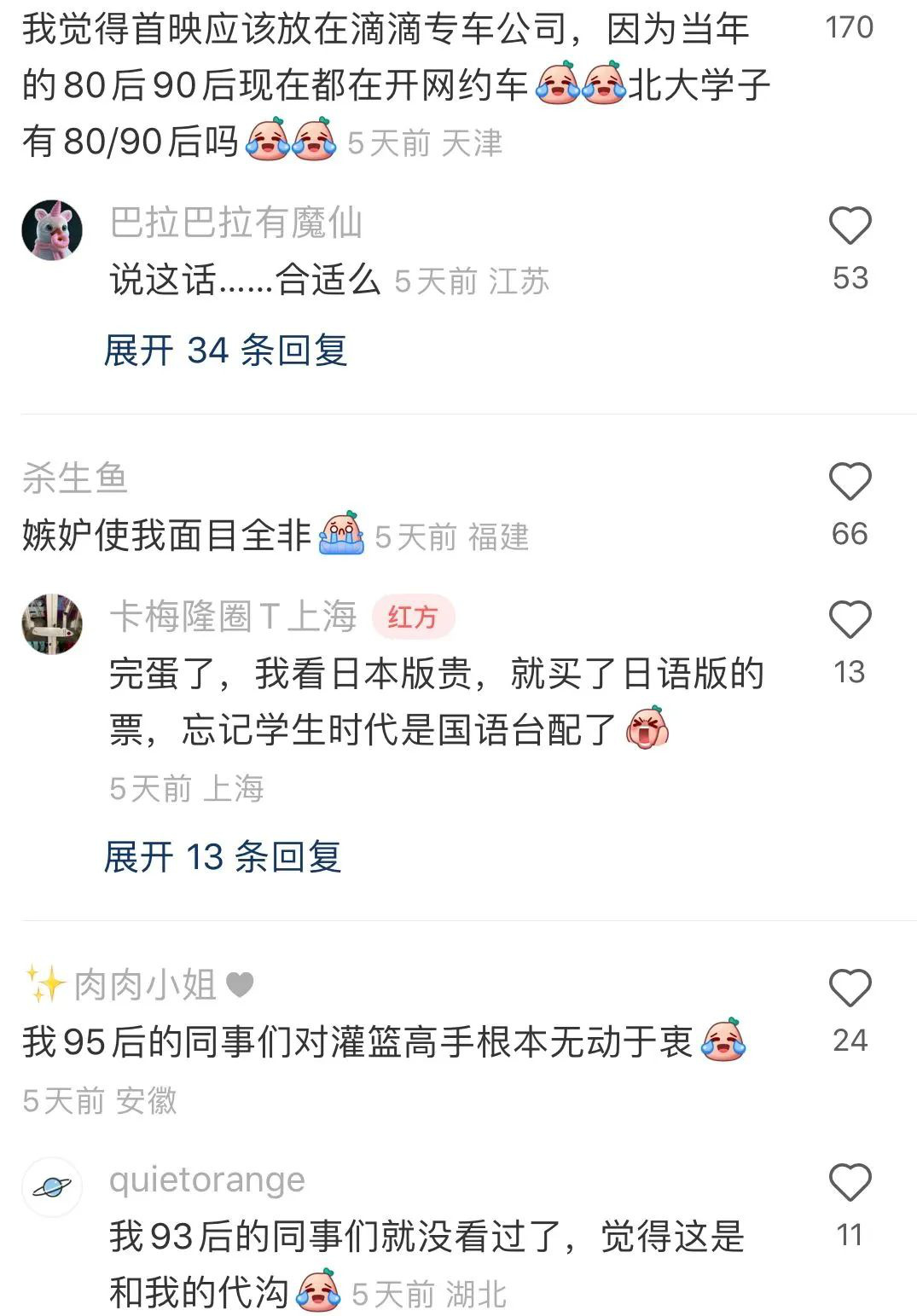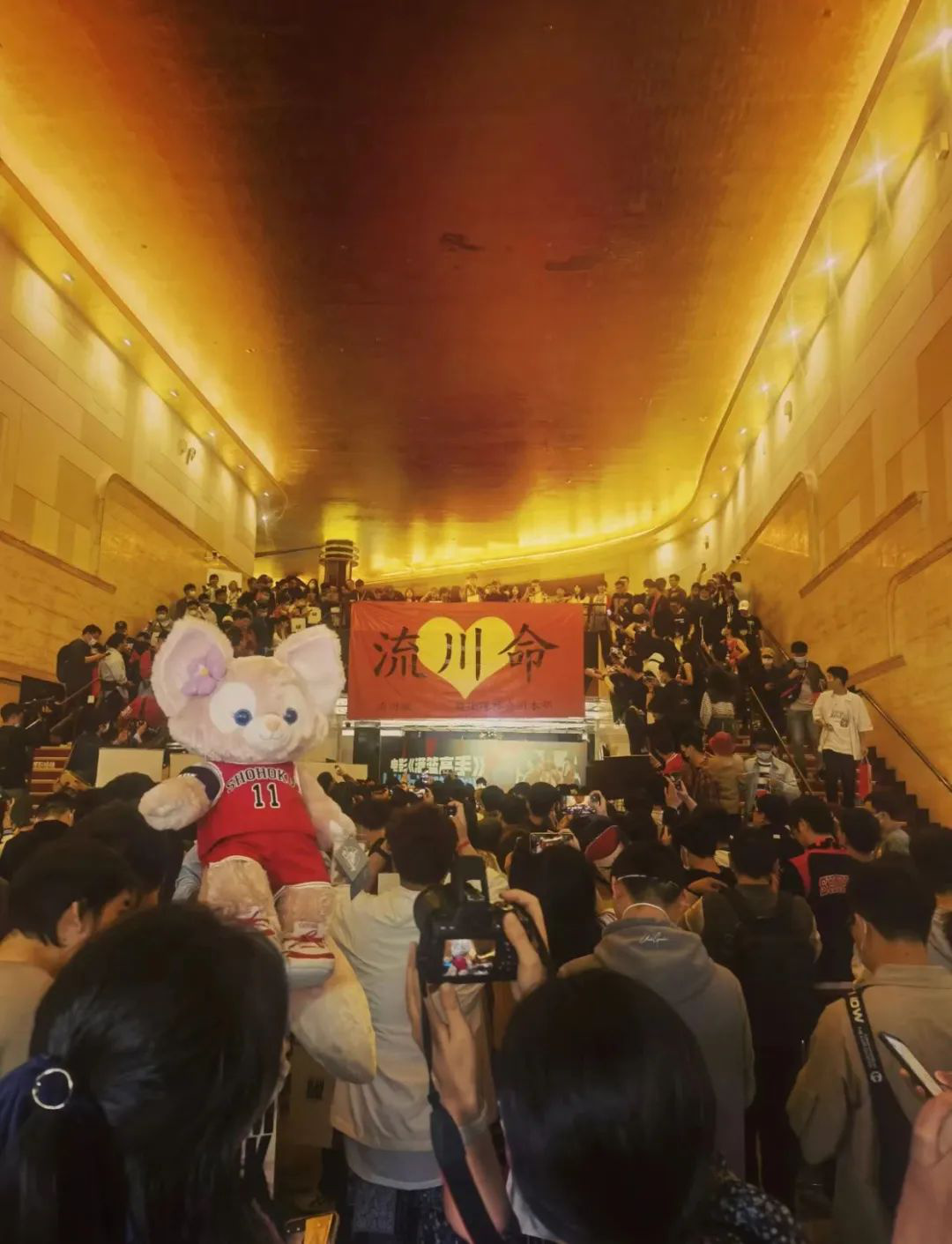Author | Xie Minghong
Editor | Li Chunhui
When a generation bid farewell to youth, playing basketball in the sunset is no longer forbidden by parents and teachers, but by old arms and legs.
The brother who practiced shifting with you became a mini-Anxi coach, and he gasped after running for two steps; Your Akagi Haruko, I almost didn’t recognize her when I met her at the last reunion. Little Rukawa Kaede, who was amazing, had the highest honor as a national second-class athlete, who ended his sports career early because of injury; Looking at the basketball court in a daze, you are receiving news from your daughter with a little genius watch at the moment. Listening to the creaking sound of basketball shoes rubbing against the plastic court, who can’t help sighing?
In "shaolin soccer", Stephen Chow finds his disciples from all walks of life to conquer the stadium, which is only an adult fairy tale after all. Now, if we put the "five tigers in a school" together and go to the basketball court, I am afraid we must first consider the heart rate after "Yangkang". However, in those days, the "seven tyrants of the mountain king" in the class next door or outside the school was naturally not what it used to be, but it was very suitable for meeting and laughing.
This is the ultimate magic of youth, or time-smoothing all the edges and making everyone look like adults.Once high-spirited teenagers, also more or less understand the meaning of Takehiko Inoue. The cruelty of reality will not be lenient because of strong will, and the background color of youth is regret. But even if this doomed failure is not enough to be pretentious with "greatness", it is acceptable, and you can still smile and even tears for you when you recall.
The movie version of "Slam Dunk Master" seems to cover the youth of several generations, although it is only a confrontation for dozens of minutes. When Hanamichi Sakuragi’s whistle ball fell, the cinema was very quiet, followed by applause and one after another "awesome" and cheers. Who was Hanamichi Sakuragi and Rukawa Kaede in those who held banners of "National Domination" and "Life in the River", and those uncles who knelt down to coach Anxi?
Neglected juvenile delinquents
Seeing Hanamichi Sakuragi’s hairstyle before he shaved his head, Hard Sugar Jun suddenly realized: Isn’t this the standard hairstyle of "I am a mobile phone" played by Kento Kaku? Hanamichi Sakuragi is a juvenile delinquent in any Japanese TV series other than Slam Dunk. When I transferred to Hong Kong in the 1990s, I would not hesitate to join Brother Hao Nan.
Compared with Hanamichi Sakuragi’s badness, Miyagi Ryota in the cartoon is more like a teasing analogy of "acting with nostrils".In the film version, after Takehiko Inoue installed the family of origin filter on him, the whole person immediately felt "broken".With exquisite unilateral earrings, it adds melancholy temperament.
He is the most easily overlooked teenager in the TV animated version. Watching "Slam Dunk Master", you can substitute either an unpretentious Hanamichi Sakuragi, a handsome and aggressive Rukawa Kaede, or Mitsui and Gorilla Akagi. Few people will notice that Miyagi Ryota, who has no height advantage, often matches the ball for everyone and organizes attacks. Have you ever thought that the Xiangbei team, as the starting point of Rukawa Kaede and Sakuragi, has made great efforts to reach Miyagi?
How can there be so many talented teenagers in this world? Most of them are simple-minded but have great love for basketball. In Miyagi Ryota’s memory killing, he is the younger brother who is inferior to his brother everywhere, a bad boy who always makes his mother angry, and a maverick transfer student who is bullied because of his expression.
"You said that you are a brother and I am a brother. You have to shelter me from the wind and rain." I wonder if Takehiko Inoue has ever heard of Chang Shilei’s "Brother", otherwise it is very appropriate to use it as the OST of Miyagi. In the eyes of little Miyagi, my brother should always practice basketball with him. So when my brother "stood up" and went out to sea with his friends, Miyagi cursed the liar and bastard on the shore and never trusted you again. I didn’t expect this farewell to be farewell.
In Pupil of the Beast, Daniel Wu is Louis Koo’s younger brother (identical twin), and he has lived in the light of his older brother since childhood. He later embarked on the road of boxing, as if he were feeling his brother’s life. In Slam Dunk, Miyagi insisted on wearing his brother’s No.7 basketball suit, and fought hard against Shanwang Industry, all of which meant "playing for my brother".
This is obviously an attachment that transcends blood and affection. One person lives as the shadow of another person, and finally he can’t tell whether he loves basketball (boxing) or his brother.Every time I score two points in the movie, Miyagi will enter the memory killing, or "Prajna floating life". Memory swallowed him completely, and he will never forget the brother who taught him to dribble through.
The film also joins the reconciliation between Miyagi and his mother. Mother always feels that Miyagi is not obedient enough, and Miyagi always feels that he is not as good as his brother in his mother’s heart. At the seaside, my mother didn’t ask Miyagi if he had defeated his opponent, but if he had grown taller. In the play mode, this is very Hollywood. From family of origin, this is a very East Asian family.
In this respect, Miyagi should really learn from salvador dali. Although he also had a brother who died young and was given the same name as his brother, Dali always wanted to prove to his mother that his brother was just an experiment of his previous failure. Although inferiority and arrogance are not normal mentality, they can always make themselves feel better. Alas, in the final analysis, there are many problems in the second-child family.
Is youth a failure?
There is no national competition in the TV version, which is still unfinished. However, in 1996, the cartoon version of Slam Dunk gave everyone an unexpected ending: Hanamichi Sakuragi hit a key 2-pointer in the national competition and defeated the former national champion Shanwang Industrial Team. Then in the next competition, Xiangbei was defeated by Aihe College and was eliminated.
Such a bleak ending once caused thousands of readers to petition for Inoue to continue serializing and resurrect northern Hunan.But Inoue insisted on the original idea: "For me, there is no other ending better than this one. Perhaps, youth is not perfect. "Today, when the fan economy is in full swing, such an ending will definitely be called "unfinished". Those who have the ability have to rewrite the ending themselves.
In Inoue’s heart, Xiangbei doesn’t need to win the first place in the country, they just need to beat the powerful enemy Shanwang Industry, which is enough to prove themselves. Of course, slam dunk can have a cool ending that sweeps across Asia and wins Europe and America, but can this ending of "full bloom and full moon" be really satisfactory?
At that time, most fans blamed the ending on the editorial department’s forced ending of the story. But Inoue later made it clear: "I decided and told the editorial department about the last ending a few weeks ago."
The real ending of the story is in 2004. In order to commemorate that the total sales of Slam Dunk Master exceeded 100 million copies, Inoue drew the final chapter "Ten Days Later" of Slam Dunk in an abandoned middle school classroom in Kanagawa with 23 blackboards as the bottom.
Akagi Takenori was not recruited by the expected university, and went back to school to prepare for the university entrance examination. Hanamichi Sakuragi was recuperating from a back injury, and Rukawa Kaede didn’t go to the United States as he wished. Mitsui stayed on the basketball team and wanted to participate in the winter trials. Lingnan Yuzhu inherited the family business and bid farewell to basketball. And Haruko, whether she still has a crush on Rukawa Kaede or has quietly accepted Sakuragi will be a secret that youth can never tell.
In the film version, Inoue continues to emphasize that the only way in life is to accept failure.Zebei, a master of Shanwang Industry, asked in the shrine before the game, "What experience can you provide me?" After losing the game, he cried bitterly, and he should already know what this experience is. The most surprising thing is that the two Japanese players who played in the United States at the end of the film were Zebei and Miyagi, not Rukawa Kaede who was expected to "go to the United States".
What is more interesting is that Zebei was interviewed by a Japanese reporter. In the past, because of his height advantage, King Shan was in charge of the main offensive firepower, and was even rendered as the strongest in the whole comic book. In the United States, because he lost his height advantage, he became a defender and joked that he should adapt as soon as possible.
Inoue’s intention is obvious.One mountain is as high as another, and the peak you look up to is just a supporting role in other worlds.We waded across the river called Youth, leaving the fragments of our memories in ripples and eddies. This story belongs to both the people in the painting and us outside the painting. I have grown into an ordinary adult, and I want to see "Slam Dunk Master" and touch the once hot youth.
Without youth, we can understand youth.
On April 15th, "Slam Dunk Master" held its premiere in Qiu Deba Gymnasium of Peking University. Hard Candy Jun was very sad to see a highly praised comment in Xiaohongshu-"The premiere should be placed in Didi Special Car Company, because the post-80 s and post-90 s are now opening a car."
Although not so exaggerated, many fans pointed out that the premiere was chosen in the wrong place: how many college students have seen Slam Dunk?Hard Candy King was born in 1993, and when watching the film version, some characters felt that the relationship was already very vague. 00, although I don’t rule out watching Slam Dunk, it is obviously difficult to have the group resonance of inter-generational collective watching after 80′ s and 95′ s..
From the viewing experience, it is the classic character contradiction and character portrayal that can poke the joke at the scene most. For example, Hanamichi Sakuragi’s confidence in honey juice always steals rebounds in unexpected places of Mountain King, and thieves nervously shout "mine". He and Rukawa Kaede finished their cooperation at the critical moment, clapped their hands to celebrate each other, and immediately turned their faces back to the "king doesn’t see the king" dislike mode. Akagi and the opponent’s striker are both big bodies and big nostrils, and the way they look at each other often causes the audience to laugh. Sakuragi played with coach Anxi’s fat face in a fancy way, and it was a full house every time.
It can be said that "Slam Dunk Master" has cultivated and domesticated the core fans to the extent of meaning and words. Even if the movie version of Slam Dunk is not a biography of Miyagi, but Rukawa Kaede, Sakuragi and Akagi Haruko are fighting landlords, the audience may not be too harsh.
As for the criticized painting style of "Three Shades and Two Shades", Hard Candy Jun feels that it is actually more suitable for the current big screen. Although I still prefer two-dimensional traditional painting style in my heart, I always have to keep pace with the times. Except that the teleportation of the characters at the critical moment is not as good as the TV version, the overall performance of "Three Shadows and Two Shades" is smooth and soft.
However, even the songs don’t have "Until the End of the World" and "I really want to say I love you loudly", which is really disappointing.We have half the ticket money, all for these two songs. And isn’t Rukawa Kaede cold and white? It’s too vulgar to change the skin color of the shadow version to black.
Turwin once divided long-term memory into situational memory and semantic memory. In 2014, Charapedia, a well-known Japanese animation voting website, released the "20 Most Impressive Anime Characters Famous Words". Among them, coach Anxi’s "If I give up now, the game will end early" and Mitsui Hisashi’s "I want to play basketball" ranked first and seventh respectively. These two sentences are undoubtedly the semantic memory shared by the fans of slam dunk.
These semantic memories imply the motif of youth narrative-growth and loss. No matter whether you win or lose the game, you have basketball and teammates to accompany you. Years later, when "I" grew up and had more than one social identity, the memory of "Slam Dunk Master" was a process of choosing and constructing "I am what I am". It urges people to constantly recall their previous stories related to "Slam Dunk Master" and extract interesting bits and pieces.
Rukawa Kaede is the pure ideal self, Hanamichi Sakuragi is the adolescent self, and Mitsui Hisashi, who lost his way, is the growing self.When we look back, it is inevitable that we will have new thoughts on "Slam Dunk Master" and learn from it the experience materials of self-cognition.
How many personnel were renovated, how many honors and disgraces were unforgettable, and finally they all became basketball courts in the sunset. Brothers are sweating at you, and the girl you like is standing on the sidelines. A burst of Xia Feng came with some heat. At that time, we thought that there was no time limit for enjoying youth.
Read past hot articles
▼
「Entertainment hard candy」 Has now settled in
Today’s headlines | baidubaijia | A little information |36Kr
Cat’s eye movieget awayTencent News, Netease News
People’s number | Weibo | Electric shock news | New business knowledge
Tiger sniffing | Titanium media | Zhihu | Interface | Interesting Headlines
21 CN recommendation | U C headline | Sohu Public Platform








